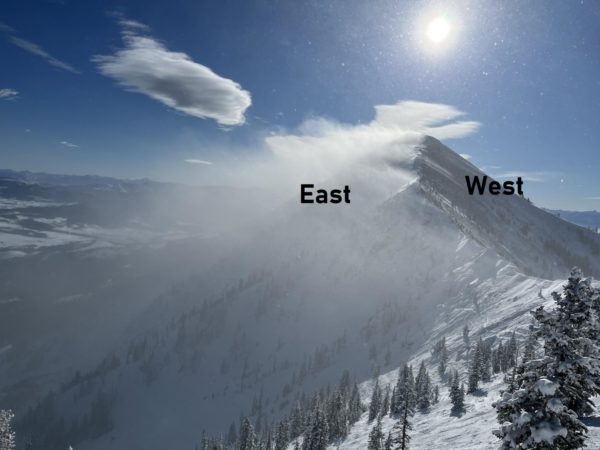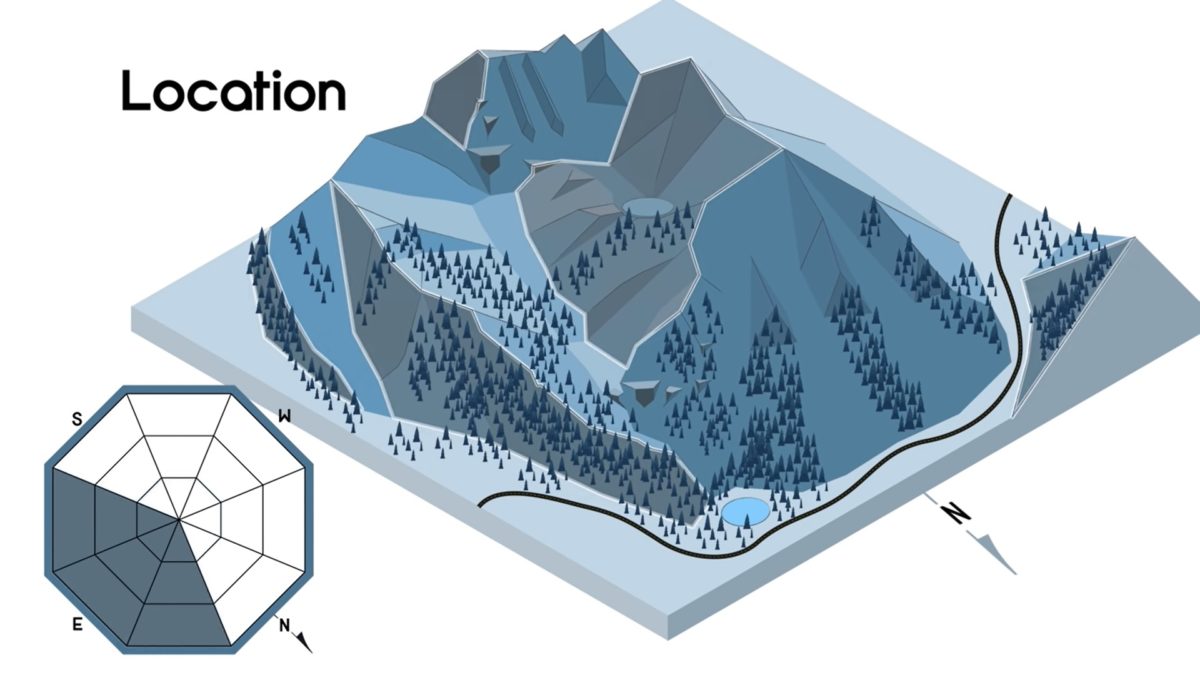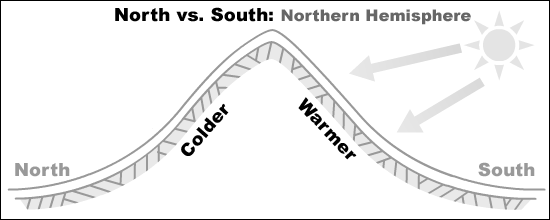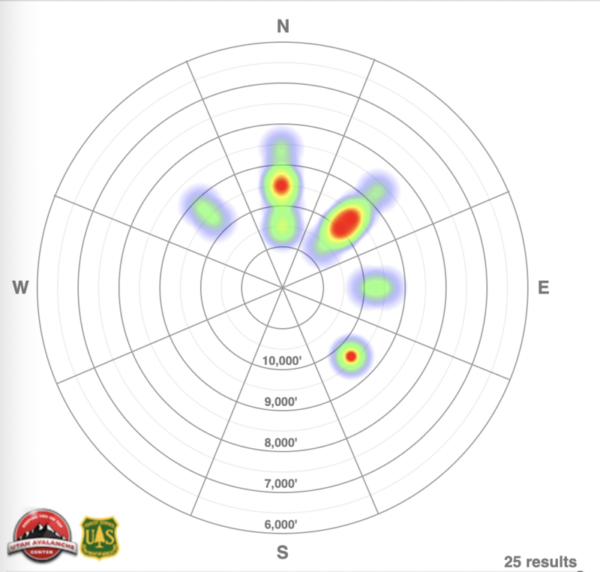The direction that a slope faces on the compass.
Aspect is the compass orientation of a slope. If you are skiing or riding down a pitch, the direction that you are facing is the slope’s aspect. Forecasters commonly categorize terrain into 8 octants: North, Northeast, East, Southeast, South, Southwest, West, and Northwest. The snowpack and avalanche hazards can change dramatically across different aspects because of differences in wind exposure and sun exposure. For example, a dangerous weak layer might form on all aspects, but get subsequently destroyed by the sun on southerly aspects. Or strong winds out of the west might form slabs on east aspects.

In this example, snow cover changes with aspect, due to differences in sun exposure. Credit: Sawtooth Avalanche Center

In this example, slabs are forming on east aspects as a result of winds blowing out of the west. Credit: Gallatin National Forest Avalanche Center



